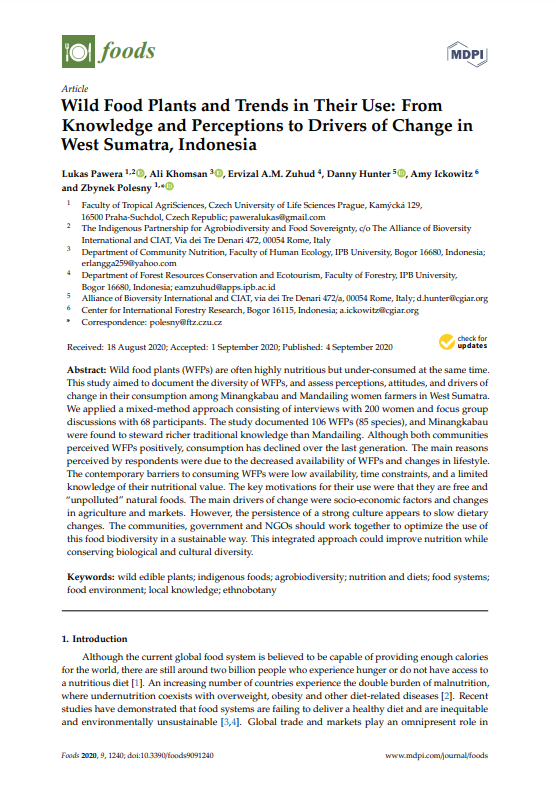Wild food plants (WFPs) are often highly nutritious but under-consumed at the same time. This study aimed to document the diversity of WFPs, and assess perceptions, attitudes, and drivers of change in their consumption among Minangkabau and Mandailing women farmers in West Sumatra.
We applied a mixed-method approach consisting of interviews with 200 women and focus group discussions with 68 participants. The study documented 106 WFPs (85 species), and Minangkabau were found to steward richer traditional knowledge than Mandailing. Although both communities perceived WFPs positively, consumption has declined over the last generation. The main reasons perceived by respondents were due to the decreased availability of WFPs and changes in lifestyle. The contemporary barriers to consuming WFPs were low availability, time constraints, and a limited knowledge of their nutritional value.
The key motivations for their use were that they are free and “unpolluted” natural foods. The main drivers of change were socio-economic factors and changes in agriculture and markets. However, the persistence of a strong culture appears to slow dietary changes. The communities, government and NGOs should work together to optimize the use of this food biodiversity in a sustainable way. This integrated approach could improve nutrition while conserving biological and cultural diversity.
Pawera, L.; Khomsan, A.; Zuhud, E.A.; Hunter, D.; Ickowitz, A.; Polesny, Z.

